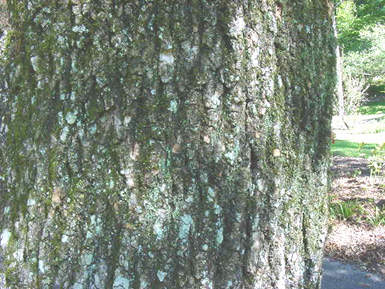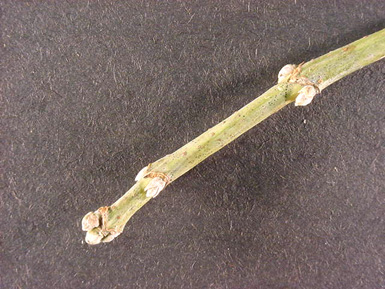Form: This is a medium-sized tree generally 30 to 60 ft. in height and 2 ft. in width. It has an irregular bole, shallow root system, and a spreading crown.
Leaves:
Arrangement: opposite; compound
Shape: Varies between ovate, oval obovate. or ovate-lanceolate
Margin: Coarsely serrate or lobed
Texture: Glabrous or slightly pubescent above, pubescent along the veins below
Venation: N/A
Bark: It has thin and light brown to gray bark with
shallow interlacing ridges. Older trees are slightly furrowed.

Twigs and buds: Twigs are stout, green to purplish green. Leaf scars are narrow, connecting in raised points. Buds are white and hairy with the lateral buds appressed.

Flowers and fruit: Flowers are yellow-green drooping racemes, occurring in drooping racemes. Fruit occurs in the form of paired V-shaped samaras.
Distinguishing characteristics: It is opposite with compound leaves and green twigs. There is a square shape to it's leaflets. It is in the maple genus.
Range: Box elder is found from Nova Scotia west to Southern Alberta and south all the way to Guatemala.
Silvics: It grows best on moist sites along lakes, streams and flood plains, but it is also capable of existing in extreme climates and can withstand short periods of flooding.
Ecological and cultural importance: There is very little commercial value in the wood, but it provides important shelter for many wildlife species. It serves as a pioneer species on moist sites helping to stabilize soils in disturbed areas. This tree could be poisonous to livestock.